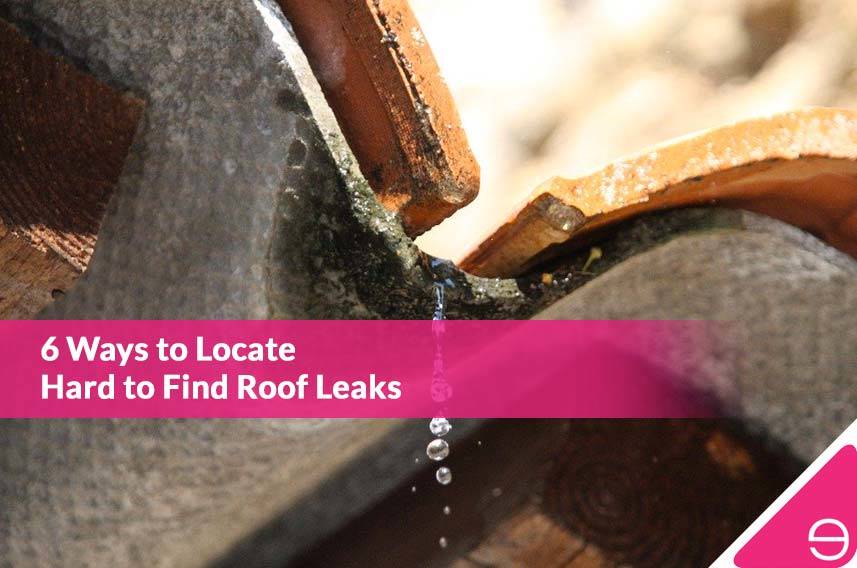It’s not uncommon that after discovering a leak coming from your roof through your ceiling, that you go up onto the roof to locate leak, only to find there’s no clear or obvious source of where the water is actually coming from.
There’s no denying that this can be a frustrating situation.
You simply can’t solve this hugely common problem unless you find out exactly where the water is coming in and how.
It’s pointless trying to do a quick patch up job by sealing or blocking any obvious gaps or holes discovered.
Until you’ve fully identified the precise location of the leak on the rooftop, the problem will simply reoccur.
If you discover you have a leak, acting fast is vitally important.
Any delay will allow roof timbers and the structural integrity of the roof to deteriorate, leading to potentially disastrous and expensive consequences!
If your roof does become completely defective, there’s no going back.
You’ll most likely have to get it completely replaced which is an eye wateringly expensive and time consuming process.
With this in mind, it’s best to act fast and to know precisely what to do if you suspect your roof is leaking.
In this article, we look at the 6 best ways to locate a roof leak and what action to take.
Read on to learn more or skip to a desire chapter by using the jump links listed below:
Table of Contents
Common Reasons for a Leaking Roof
Typically, there can be a number of reasons why a roof may be leaking.
They are:
- The age of the roof
- The lack of regular professional inspections
- Regular, persistent rainwater and ice causing degradation, fine holes and cracks
- Gaps or spaces in the metal flashing around chimneys
- Dislocation, decay or breakage in shingles
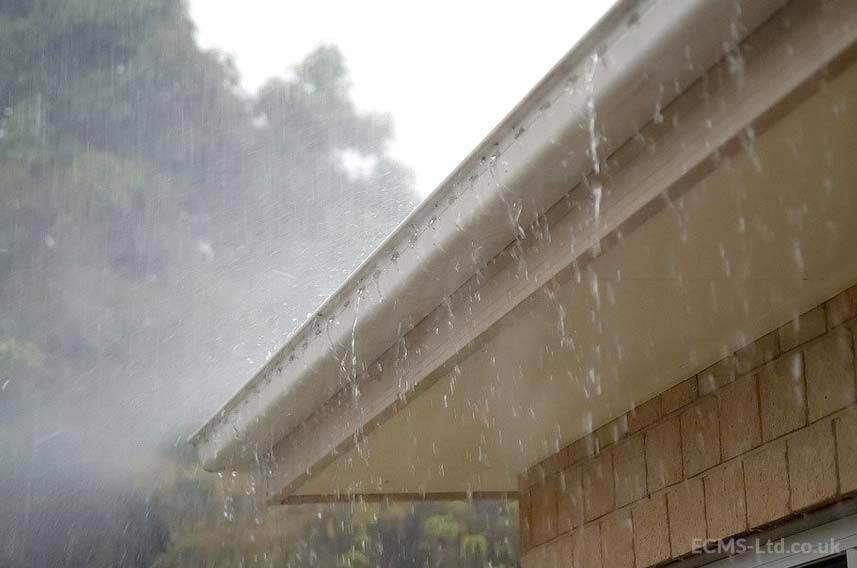
1. Inspect During Wet Weather
Once you’ve become aware there’s a leak present, it will be far easier to identify the source during wet conditions.
If the roof is dry and the weather is warm and sunny, identifying the source of leak is nigh on impossible.
Ideally, you should inspect the roof up close during heavy rainfall to examine the pattens of where water is collecting and running.
If you are trying to do this during a warm dry summer, try using a hosepipe to run water over section of the roof at a time.
Have a second person inside the premises checking to see if water comes in at any point during your tests.
During your tests, especially if it is persistently raining, there should be obvious parts of the roof where water is collecting or running underneath the tiling, flashing or mortars.
Check the integrity of the roof top to bottom, corner to corner and the signs of leaks should become clearer.
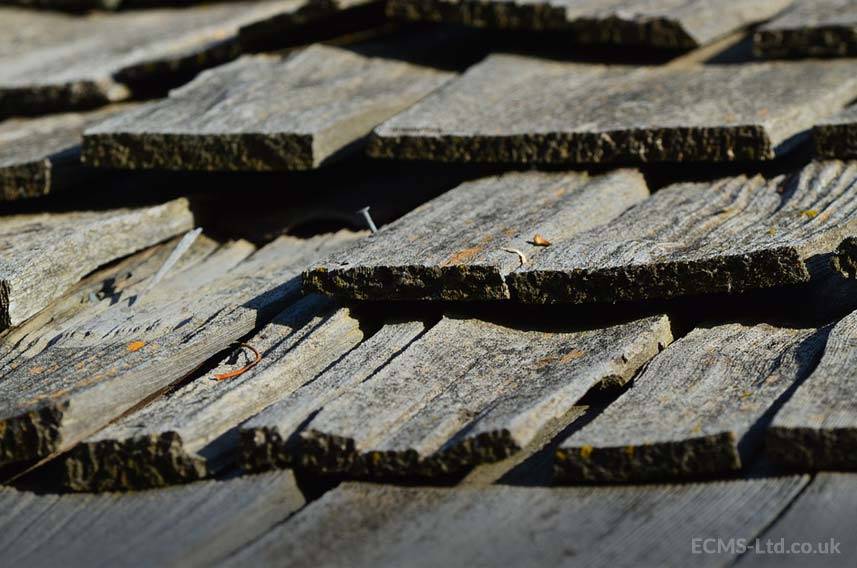
2. Identify The Internal Leak Position
Before making your way up onto the roof, it’s important to get a better understanding of where water is coming in internally.
If you have a single leak at one end of a room, it’s highly likely that the leak from the roof starts somewhere in the same vicinity.
It may not be directly above the internal position where water is visibly dripping, as liquid can travel and move around structures very easily.
But it’s a safe bet that the source of the leak on the roof will not be too far away from where you can see water coming into the building interior.
If you have multiple internal water drips in more than once place, chances are you have a major roofing defect that will be identified in minutes once you go up on the roof.
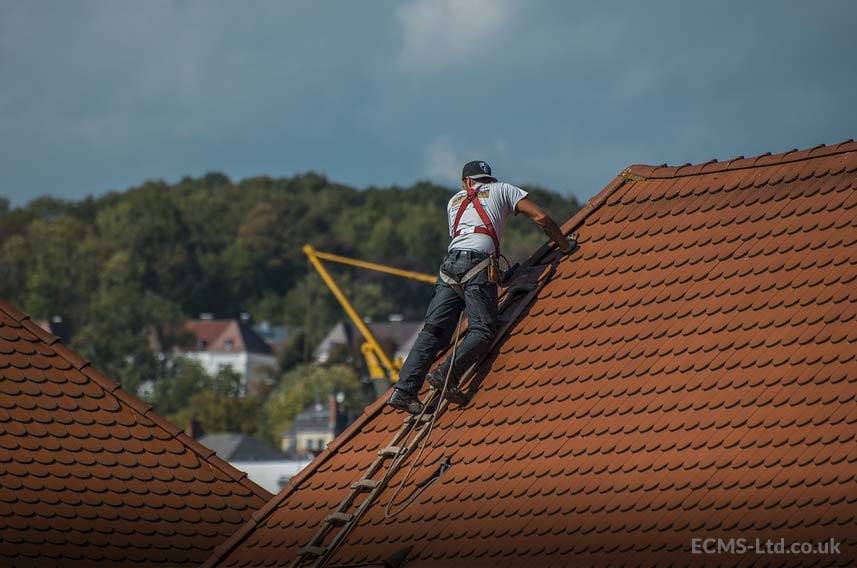
3. Choose a Suitable Day
You may not think the day of the week is important to inspect a leaking roof but do bear in mind a few important factors.
If you roof leak is microscopic, it could take you the best part of the entire day to locate the source.
Roof leaks are notoriously hard to remedy if your roof is large or the structural integrity appears sound.
Checking each and every tile, shingle or square inch of fibreglass is a tiresome and intensive job.
It is highly likely that you will be outside during wet and miserable conditions too, so progress could be slow as you fight against the elements to locate the leak.
Start early, get suitable help and wear good quality waterproof clothes.
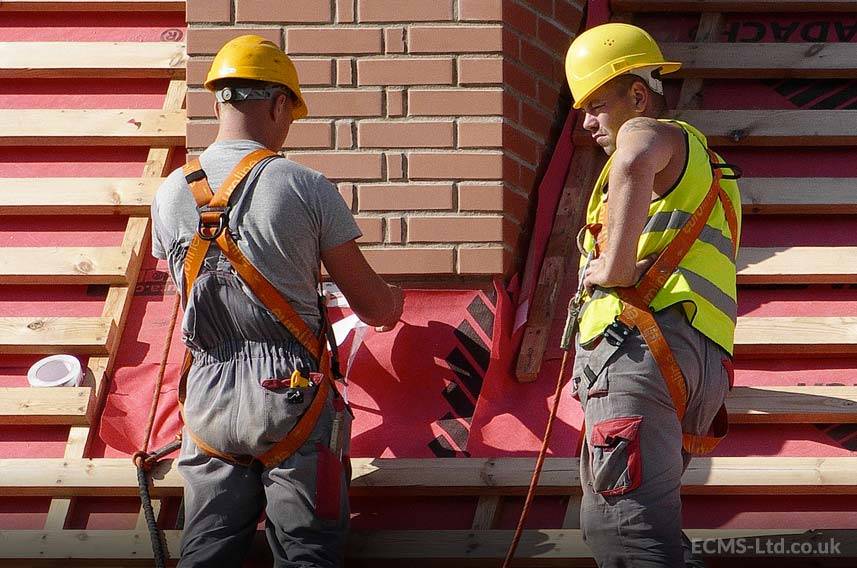
4. Completely Replace Shingles
If the main structure of your roof is made from sheet timber or wood panels such as plywood, it is highly likely to be covered with shingles.
It’s common knowledge that shingles deteriorate fast and after a number of years will perish and become substandard.
If that’s the case, save yourself time and hassle by replacing all the shingles completely.
Re-felt your roof with brand sheet shingles.
Any attempts to patch up leaking shingles is pointless.
Once they start to deteriorate, there’s no going back.
Within weeks, you’ll be back up on the roof patching up newly discovered leaks and gaps with filler that won’t do the job.
Save yourself a longer term headache and cost by doing the job once and doing it right.
Just replace all the shingles or opt for a longer lasting material instead, such as fibreglass.
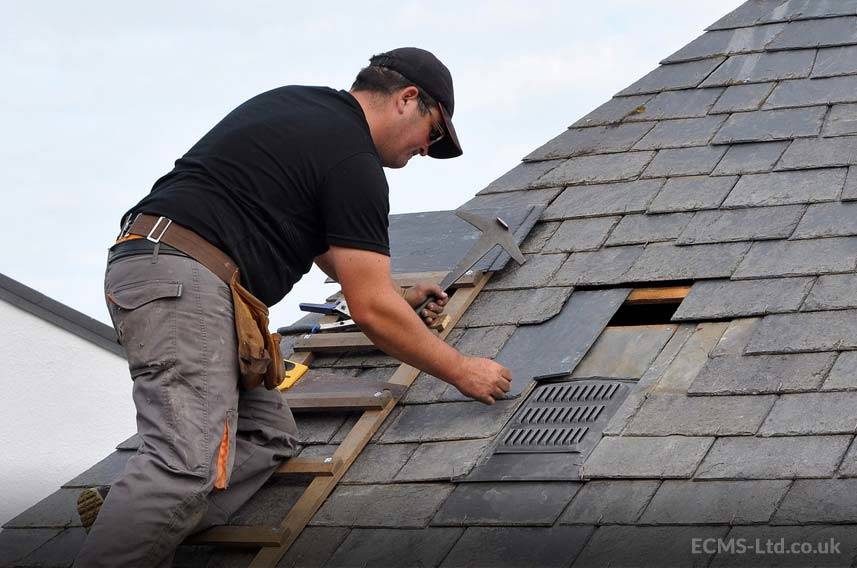
5. Look for the Presence of Moisture or Mould
If you have access to the roofing joists via an attic or accessible roof space, this will help save time.
By using a flashlight or torch, you should be able to see obvious signs of long term moisture presence if the roof leaks has been ongoing.
Water will soak and stain into most absorbent structures and in some cases, form mould and mildew.
Obvious rotting timbers and joists will be another massive clue as to where the water is coming in and how long for.
By doing an internal inspection first, it will make your external inspection area far more accurate and the leaks easier to find.
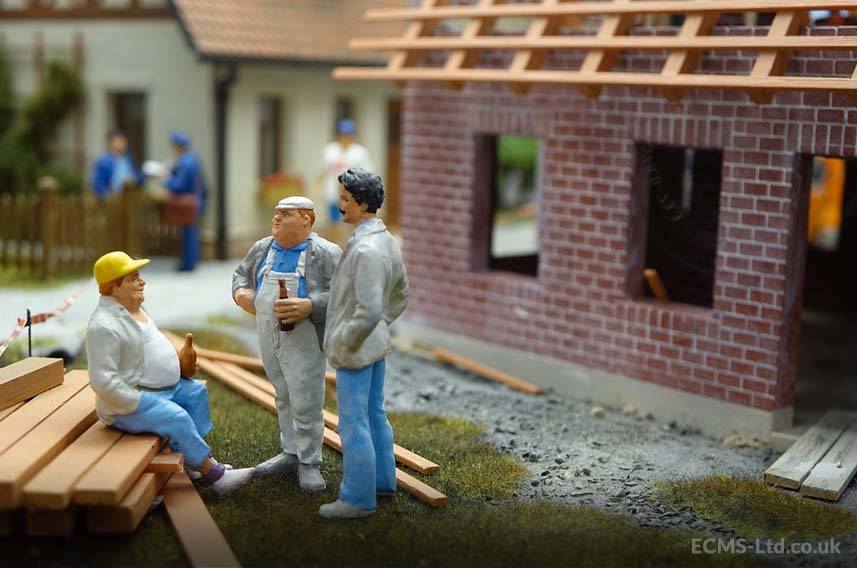
6. Areas You Must Check
When it’s time to go up on the roof, make sure to check the following common causes of roof leaks:
- Shingles
- Flashing
- Gutters
- Fascias & Soffits
- Gulleys
- Spouts
- Air Vents
- Flues
- Water & Gas Pipes
Conclusion
Finding tiny roof leaks quickly is important so that you are able to repair or block them before they cause longer term damage.
Any delays and you could be faced with a huge bill if your entire roof structures need to be replaced, not to mention internal waster damage caused to walls and ceiling.
The repair bills can easily stack up.
So if you suspect you have a roof leak, act fast and make a quick decision.
If you feel competent enough to handle the job yourself, then get all necessary equipment together and make your way safely up onto the roof.
Ensure you are wearing protective clothing and suitable footwear.
Climbing up onto rooftops is a dangerous task so ideally, should always be carried out by a trained professional.
If you believe you have a leak and want it inspected and repaired quickly and efficiently, speak to our team at ECMS who have fully qualified and insured staff on hand to do the job.
Never leave it to chance.
A leaking roof can cause untold lasting damage that can rack up into the thousands of pounds.
Always use a professional to either repair or replace your roof.


